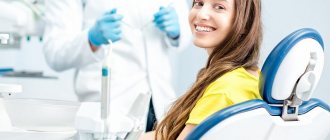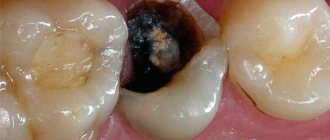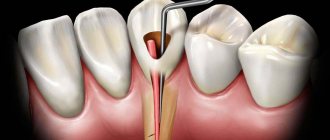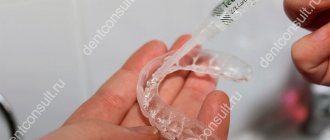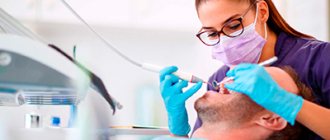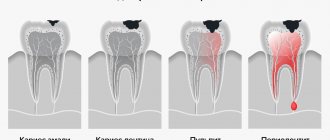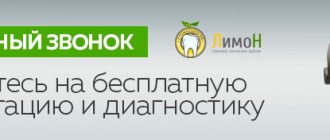One of the most common questions that dentists have to answer is whether it is possible to treat teeth while breastfeeding? During lactation, women very often encounter toothache and caries - this is due to a lack of nutrients, stress and other factors. However, many young mothers are hesitant to visit the dentist and undergo treatment for fear of harming their nursing baby. Meanwhile, doctors say: breastfeeding is not a reason to refuse dental treatment. It is possible and necessary to eliminate dental problems during breastfeeding, but with some reservations.
Indications for tooth extraction during lactation
During the procedure, drugs are used that can penetrate into mother's milk. If it is possible to postpone the date of the operation, then extirpation is carried out after the child is transferred to artificial nutrition. A dental unit is removed urgently during a purulent inflammatory process, as it contributes to the spread of infection throughout the body.
In what cases is surgery necessary:
- suppuration of a cyst, abscess, periostitis;
- unsteadiness due to periodontitis, periodontal disease of the third, fourth degree;
- odontogenic osteomyelitis, sinusitis, phlegmon;
- tooth root fracture;
- pulpitis, which cannot be cured due to the complexity of the canals;
- impacted figure eight, complicated growth of the third molar, pressure on neighboring teeth;
- deep caries that affected the root.
Unscheduled extraction is also performed in cases of severe, persistent pain.
The procedure has contraindications, including acute respiratory infections, chronic diseases in the acute stage, oral infections, sinusitis, severe pathologies of the liver, kidneys, heart, blood vessels, leukemia, bleeding disorders, and mental disorders.
Before you get vaccinated
Taking into account the fact that in the vast majority of cases, vaccinations are well tolerated by healthy children without any preparation or pre-treatment, the most important point in preparing a child for vaccination is to determine contraindications to vaccinations, that is, those cases of illness in a child in which vaccination can give serious adverse reactions. Contraindications and precautions for vaccination; in some cases, vaccination in children is either strictly prohibited or should be postponed to a later date. In order to correctly assess contraindications and precautions for vaccination in a child, it is important to follow the vaccination calendar and know in advance which vaccination should be given to the child and when. Before vaccinating your child and on the day of vaccination, read what contraindications and precautions are associated with the administration of a particular vaccination and make sure that the child does not have any contraindications for the vaccination. If you find it difficult to determine certain contraindications or precautions (for example, how dangerous a child’s cold or cough is), show it to your doctor. You should not blindly refuse vaccination because of a slight runny nose or cough - this will only disrupt the vaccination plan.
Preparing for removal
If the tooth begins to ache, the gums are swollen, and the breath smells bad, then this may indicate severe inflammation in the dental system. At the appointment, the dentist collects an anamnesis, conducts a visual examination and sends the woman for an x-ray. It is important for a nursing mother to avoid psycho-emotional stress, so she is allowed to take sedatives in advance.
The best option for maintaining mental stability and eliminating fear is oxygen sedation with nitrous oxide (NAS). It is done in the doctor's office before the procedure. The patient inhales the gas and falls asleep. Additionally, a local anesthetic is injected into the gum.
Postpartum hemorrhoids are almost always external hemorrhoids
Many of my patients at the appointment additionally note that they themselves did not give birth, but had a Caesarean section. My dears, the process of childbirth itself does not play any role in the development of hemorrhoidal disease (recently, a woman was seen after two Caesareans - 4.5 and 1.5 years ago with quite large inflamed hemorrhoids)! Hemorrhoids grow during the 9 months of pregnancy due to high levels of progesterone and a large uterus in the second half of pregnancy, compressing the pelvic veins.
During childbirth, existing hemorrhoids “just” become inflamed and worsen due to stress.
Please remember this:
- Hemorrhoids appear and grow during pregnancy.
- During childbirth, hemorrhoids become inflamed.
This is precisely why a Caesarean section will not get rid of hemorrhoids, but it can get rid of its inflammation. Although not necessary.
The process of tooth extraction in a nursing mother
The procedure for a woman during lactation is no different from that performed for ordinary patients.
Extirpation of a dental unit is carried out in stages:
- antiseptic treatment of mucous membranes;
- anesthesia with local antiseptics or general anesthesia;
- applying forceps and disconnecting the ligament;
- rocking or dislocation;
- extraction from the hole;
- stop bleeding.
If the third molar from below is removed, the operation becomes more complicated. In order to pull it out, the doctor cuts the gum, removes part of the bone, divides the roots into fragments and removes them separately. To prevent infection, the wound is treated with antibacterial drugs. After all manipulations, the gums are sutured with absorbable or non-absorbable suture material.
Principle of examination
Every mother worries about the health of her child. There is a prejudice that x-rays are dangerous during pregnancy and breastfeeding. This opinion is wrong. If there are indications for an x-ray examination, it is worth undergoing it.
X-rays of the teeth, chest, and lungs are performed on many women during the postpartum period while breastfeeding. During the examination, a special apron is worn to limit the effects of radiation. Fluorography is safer than x-rays.
The examination operates on the principle of analyzing the nature of the passage of X-rays through body tissue. The radiation dose is minimal. After the procedure is completed, the effect on milk and the body stops.
X-ray and anesthesia during lactation
Before extirpation of a dental unit, an x-ray or computed tomography is almost always done. This is necessary to assess the structure, position and condition of the root system. To protect the patient from x-ray radiation, she is wearing a lead apron. It blocks dangerous waves, but after the procedure it is better to express the first batch of milk and pour it out.
For local anesthesia, private clinics use drugs approved during pregnancy: Ultracain, Ubistezin, Artifrin, Alfacain and similar medications. They do not contain toxic components that can cause allergies and other side effects. Primacaine has a short half-life, so feedings may not be missed.
Anesthesia is used only in extreme cases, if a complex and lengthy extraction is being performed. If general anesthesia is necessary, the child is temporarily transferred to artificial nutrition. During this period, the mother must express milk regularly to ensure milk production continues.
If antibiotic therapy is necessary after a complex removal, then breastfeeding will have to be stopped for several days. During long-term withdrawal, doctors recommend giving artificial formula not through a pacifier, but through a spoon or even a syringe without a needle. Otherwise, the baby may refuse to breastfeed, since the process of sucking milk from a bottle with a nipple is much easier.
Pain relief during treatment
At any age of the child, you can easily treat caries and gum disease. But you must tell the dentist at your first visit that you are feeding your baby. Then the doctor will select safe medications.
Don't forget to tell your dentist that you are breastfeeding your baby.
Most local anesthesia is short-acting. This means that it circulates in the blood for a short time.
During lactation, dentists recommend using:
- "Lidocaine";
- "Ultracaine".
"Lidocaine"
"Ultracain DS"
Important! Both drugs are eliminated from the body within three to six hours, depending on the dose. Therefore, it is recommended to feed your baby immediately before visiting the dentist and stock up on a portion of breast milk in advance for the next feeding. Once you return, you need to express and discard the milk. And the next milk will be completely safe for the baby.
You need to stock up on breast milk before visiting the dentist
Recommendations for the recovery period
In order to avoid complications after surgery, you need to follow all the doctor's advice. After the procedure, the doctor applies a cotton swab to stop the bleeding. It should be held for no more than 10 minutes, otherwise the blood clot will dry out and come off along with the cotton wool. With high blood pressure, bleeding continues for a longer time, so the tampon can be kept in place for 15 - 20 minutes.
In the first days you cannot:
- overheat the body, apply warming compresses;
- engage in heavy physical labor and sports;
- lick a blood clot;
- eat hot, spicy, rough food;
- drink through a straw;
- smoke;
- touch the socket with a toothbrush and other objects.
You are allowed to eat after 3-4 hours. The issue of feeding a child should be discussed with a doctor. Local anesthetics practically do not enter the blood, and components penetrate into mother's milk in minimal quantities. If the doctor has not prescribed other medications, then you can feed the baby within a few hours.
After the anesthetic wears off, pain appears. Possible increase in body temperature. To relieve acute symptoms, you can take Paracetamol, Ibuprofen, Naproxen. You can reduce pain and swelling by using cold compresses.
Rinsing your mouth and brushing your teeth is allowed on the second day. For rinsing, pharmaceutical preparations are used: Romazulan, Chlorhexidine, Miramestin. They will prevent the development of infection and inflammation. You can rinse your mouth with an aqueous solution of baking soda and salt. To improve the healing of damaged tissue, decoctions of oak bark, chamomile, and calendula are used.
The dangers of diarrhea while breastfeeding
Diarrhea is more dangerous for the mother than for the baby
Often mothers think that the main danger of diarrhea is the risk of infection of the child and interruption of breastfeeding. But modern medicine adheres to the point of view that diarrhea poses a greater danger to the mother than to the child, and breastfeeding can be done even with an intestinal infection. Infections are transmitted through unwashed hands, and not through milk, and food poisoning does not need to interrupt breastfeeding for the reason that, along with a small dose of toxins, the child also receives the mother's antibodies to the infection.
In case of a viral infection and a significant deterioration in the mother’s condition, the doctor may advise stopping breastfeeding for a short time, but there is no need to completely switch the baby to formula. Diarrhea is more dangerous for the mother, because she always needs to have strength to take care of the child. If mom suffers from diarrhea, eats poorly, sleeps poorly and is stressed, her milk supply may decrease. The most dangerous consequence of diarrhea is dehydration. The body loses water, vitamins and microelements that it needs for normal functioning.
With infrequent and mild diarrhea, the harm caused to the body is small, but with chronic and severe diarrhea, you need to sound the alarm, consult a doctor and get treatment. It is very important to stop fluid loss. If the body loses 10% of water, quite serious disorders begin, severe exhaustion, weakness, lethargy. When 25% of water is lost, death occurs.
Bloody diarrhea is very dangerous. He requires immediate hospitalization. The so-called “black stool” mixed with blood is a sure sign of intestinal bleeding. Under no circumstances should you try to stop it yourself; you cannot do without medical help.
Severe and prolonged diarrhea (more than 3 days) can lead to shock. Symptoms of shock include cold sweat all over the body, dizziness, rapid pulse, and severe weakness. In this case, you also need to call an ambulance.
Prevention measures
Extraction of a dental unit is carried out in cases where the disease is advanced or therapeutic treatment does not have an effect. Since teeth decay faster during pregnancy, it is necessary to carry out proper oral hygiene and undergo a preventive examination by a dentist while carrying a child. If pathology is detected in the early stages, removal will not be required.
Doctors' recommendations during lactation:
- brush your teeth twice a day;
- rinse your mouth after every meal, use dental floss;
- eat well;
- limit consumption of sweet foods.
During lactation, teeth can and should be treated. Even if anesthesia is performed with lidocaine, there is no need to worry. You just need to check with your doctor for how long you should refrain from feeding. The components of the drug enter milk in minimal concentrations, so when used in small dosages they will not harm the baby’s health.
What are the features of treatment?
A number of procedures not recommended during pregnancy. These include:
- Teeth whitening;
- Implantation, because this procedure involves the use of antibiotics and other medications;
- Removal of a wisdom tooth, since after this operation there may be an increase in temperature and the need to use antibiotics.
Also, certain medications should not be used when treating teeth during pregnancy.
Treatment of postpartum hemorrhoids
Laser coagulation of hemorrhoids is well tolerated, is performed on an outpatient basis and does not require giving up breastfeeding .
Let's look at a few more situations that are very common after childbirth.
During childbirth, hemorrhoids became inflamed, and then the inflammation went away and nothing bothers me. There was only a small fold of skin left in the butt. A common situation. There are hemorrhoids, but they are small and there are no clinical manifestations of the disease now.
There are two options for the development of the situation that most often occur.
- As the child grows up, the load increases and the hemorrhoids begin to become inflamed or bleed. If there is dense feces, a tendency to constipation, then problems appear earlier and bother you more often. Medicines don't help much. This option occurs in about a third of patients. They are contacted earlier, most often before a year and a half from childbirth, hemorrhoids are usually small or medium-sized, and respond well to treatment. Treatment results are most often good or excellent.
- There are external hemorrhoids, they progress slowly, gradually, and do not bother me much. Medicines initially relieve exacerbations well. But gradually exacerbations occur more often, more severely, medications stop helping, and the situation forces you to see a doctor.
In both situations, the later you contact a proctologist, the more difficult it is to improve the health of your butt. This is understandable: the larger the hemorrhoids, the more problems, the larger the operation needed to correct the problem. And the more extensive the operation, the more traumatic it is and the less likely it is that the butt will fully recover to its pre-illness state.
What you won’t see in the prime! Years, 3-5-10 years of meaningless treatment often lead to monstrous hemorrhoids. Sometimes inpatient surgery does not help to cope with such hemorrhoids.
Does it happen that after childbirth there are no hemorrhoids? It happens, of course. I am currently treating a young mother who gave birth 4 months ago. She doesn't have hemorrhoids. I also saw one patient after three births without hemorrhoids. And about 15 - 20 patients after two births without hemorrhoids. But this comes from many years of practice. Of course, with healthy veins after the first birth, not everyone has hemorrhoids, but more than half definitely have it.
Removing 2 wisdom teeth at the same time
Removal of two wisdom teeth from one side of the jaw. Pros and cons of this approach.
Two teeth at once on one side is a very good technique. In this case, we immediately remove two teeth and the healing process takes place only once. Accordingly, the pain also disappears once. The healing is in no way burdened by the fact that we remove two of them at once. It’s a good, even excellent approach, and that’s what we do in most cases if the patient doesn’t mind.
An example of removing two wisdom teeth at once - HERE
Implantation in the wisdom teeth area
Is implantation performed in the area of wisdom teeth?
In the area of wisdom teeth, implantation is not performed in any cases. Due to the fact that there is no space in the jaw to install implants in this area. And, if we look at the jaw, it opens more in the anterior section, and in the posterior section it opens least. If we place an implant, we will not be able to make a normal-sized crown and, accordingly, use these implants for chewing.
During implantation, in case of bone tissue deficiency, the tubercle of the upper jaw or the retromolar space in the lower jaw is used to fix the outermost implants. If there is an impacted eighth tooth in this area, it is removed regardless of the complexity of the operation, since it interferes with the installation of the implant.
Is treating hemorrhoids after childbirth effective at home?
Unfortunately, women suffer from hemorrhoids. They are treated periodically using venotonics, various suppositories and ointments, and sometimes laxatives are added. And when conservative treatment completely stops helping, exacerbations become too strong and frequent, they come to the appointment and ask for a miracle to be performed.
A miracle means complete relief from hemorrhoidal problems. It is desirable, as an additional bonus, to receive an aesthetically attractive anus; and so that later you don’t have to use medications, at least periodically.
My dears, miracles in treatment happen only in the initial stages of the development of any disease, before changes have yet occurred in the organ itself and surrounding tissues. In relation to the anus - as long as the disease has not changed or significantly changed the anatomical structure of the anus.
Causes and symptoms
So, we agreed: hemorrhoids appear during pregnancy. Alas, it remains with you in later life if it is not removed.
Why is that? External hemorrhoids behave like varicose veins in the legs. Very often these diseases occur together during pregnancy. Or progress if they were there before. Therefore, just as varicose veins will not go away after childbirth, so hemorrhoids will also remain with you. And just as varicose veins will progress and cause problems, so hemorrhoids will increase and bother you.
Have you noticed an extra fold in your anus after giving birth? This is an external hemorrhoid with a 90% probability.
Is the fold gradually enlarging or new ones appearing? These hemorrhoids are growing.
The fold hasn't changed yet? This does not mean that hemorrhoids have disappeared or are not progressing: while the nodes are not large, their bulk is located deeper, in the anal canal. Can you check for hemorrhoids yourself? Yes, immediately after defecation, preferably without getting up from the toilet, wash your butt and touch it with your fingers. You can strain quite a bit. Soft tissue is identified under the fingers, and when you press on it, it decreases. This is the external hemorrhoid.
In such a situation, there is nothing I can do to please you. Go to a proctologist. The smaller the node, the easier it is to remove it with a laser.
